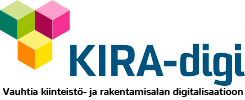Next-generation virtual reality glasses tested in construction projects
Virtual reality technology allows the eventual users of a building to be involved in its design. The project tests virtual reality glasses technology, seeking new applications for it in construction projects.
What kind of problem is this project trying to solve?
Customers should be involved in the designing of buildings to a greater extent. If the aim is to design buildings with the best possible usability, the know-how of the users in designing functions suitable for them should not be overlooked – regardless of how professionally skilled the architects are. The people responsible for building maintenance are also an important group when it comes to evaluating the usability of a building.
The most important means of involving customers in design work is virtual reality technology. For this reason, it is crucial to accelerate advances in virtual reality technology used in designing buildings, and to boost growth in business related to it.
Three-dimensional virtual models are also useful when planning construction work, providing guidelines for work stages and controlling quality. Designing a building using virtual reality in advance ensures that its plans are finalised and no modifications need to be made to them in the construction stage.
Objective: to find applications for virtual reality glasses technology
The project tests next-generation technology for virtual reality glasses in construction projects, seeking applications that would enable a breakthrough. The aim is to speed up growth in business related to 3D virtual models.
Virtual reality glasses, or VR glasses, refer to a device placed over the eyes with which the user can immerse himself or herself into a virtual world. While virtual reality glasses are widely used in various simulations and games, for example, they can also be utilised when designing buildings.
The project aims, with new technology, to achieve significant improvements to the resolution of the images displayed, which would enable such things as reading text. An enhanced user experience and better information content increase potential applications for virtual models, as well as the benefits gained from them.
What is being done in this project?
The first stage of the project will focus on ideas for potential applications. The easiest way to generate added value is in user cases of existing virtual models. However, it is also important to find new applications so as to expand business in the industry.
In the second stage, a few of the applications will be chosen for a practical test. The applications will be chosen with a view to being able to use the results of the tests to assess the feasibility of other applications.
The project will compile a list of potential applications, and the examples of the tested applications will be published in videos on the KIRA-digi website. A summary will be made of the practical experiences gained from the test and of the testers’ feedback. The technologies used, the benefits achieved and other development possibilities will be recorded for each test.
The companies involved aim to grow their virtual reality business considerably. The project will look into the market’s potential and use this information to draw up commercial plans, which will not be published.
Who benefits?
Architects, building designers, the end users of buildings and people responsible for their maintenance, and virtual reality technology companies.
Contact information




